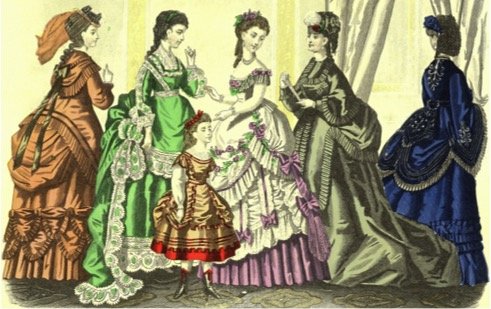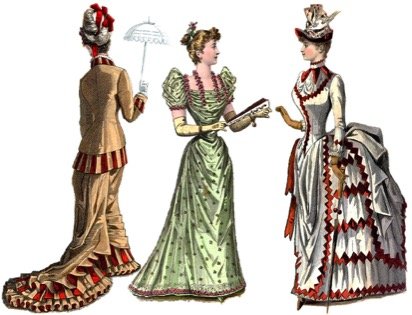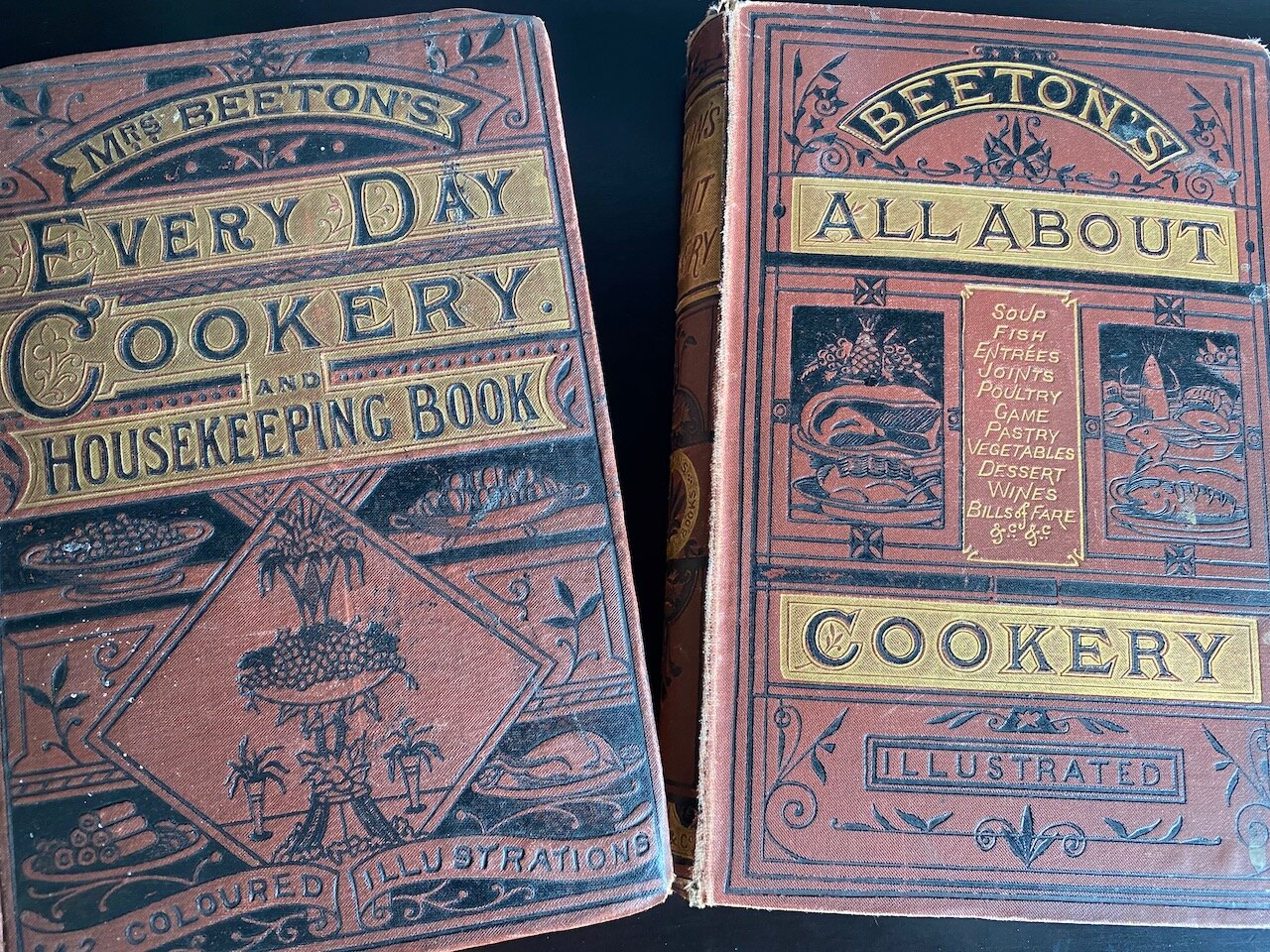One: It’s an American thing
“The Gilded Age” is a very American concept, first introduced by Mark Twain in a novel of that name published in 1873. For England, the last three decades of the nineteenth century were merely a continuation of the economic and social progress of Queen Victoria’s reign and while there are definitely parallels with the American experience, the ruling classes of England—whose wealth was based primarily on land—actually became poorer over this period as agricultural incomes fell due to competition from North America. France dubbed the period from the 1870s to the end of the century the “Belle Époque” (beautiful era), and all over Europe there was a flowering of art and technology at this time, but all eyes were on America when it came to soaring wealth and conspicuous consumption on a scale that made headlines across the Old World.
America, of course, had an easily defined turning point in its history with the Civil War, after which wealth creation moved decisively from the ruined South to the more industrialized northern states. The major cities of the north welcomed a massive influx of immigrants, who provided an endless, affordable source of labor and a class hungry to prove itself to its new home by working hard and buying goods to demonstrate its newfound economic power.
The country was also expanding rapidly westward. New immigrants were joined by adventurers from the older eastern states as those original colonies purchased or received enormous new territories. By the 1870s, frontier land was rapidly being settled and that meant more need for manpower and building materials and consumer goods and transportation to get it all there. It was a perfect boom market in which to make a truly large fortune.
Two: The railroads led the way
The best comparison for the growth experienced by the railroads in this era would probably be the dot-com boom of the 1990s and early 2000s. Men (it was always men) were coming apparently from nowhere and making the kind of stupendous money we’ve seen accumulated by the likes of Bill Gates, Mark Zuckerberg, and Jeff Bezos—but instead of the information superhighway they were building their fortunes on the literal new highways created by the relatively new technology of steam rail. Other sectors—mining, manufacturing, retail (this was the era when department stores became the hot new way of shopping), and finance, for example—were booming, but the really big money was in the railroads because they simply had no competition when it came to moving goods fast.
AA Denny locomotive, belonging to the Columbia and Puget Sound Railway, probably 1880
Image courtesy of: University of Washington, Public domain, via Wikimedia Commons
Three: America had the money, but Europe had the style
When it came to displaying wealth, Americans were slow to develop their own distinctive style. Instead, they looked to the Old World for style and culture, particularly England and France. Newly super-rich Americans viewed frequent trips to Europe as a must, and from the 1870s onward the development of fast steam liners made the trip itself an attractive luxury, with the bonus possibility of meeting “the right sort of people” on board.
The new American money aristocracy was desperate for validation, so it began inventing its own conventions and rules based on the exclusiveness it saw in the top echelons of European society. It looked to two distinct social groups for inspiration—existing American old money society, usually descended from the original colonists, and the aristocracy of Europe, particularly England for manners and France for fashion, food, and architecture. The enormous mansions of the American money élite resembled French châteaux, while its women ordered their dresses from the House of Worth in Paris and traveled to the French capital for fittings.
An example of how French style inspired America’s Gilded Age architecture: The Marble House, Newport, Rhode Island
Image courtesy of: Carol M. Highsmith, Public domain, via Wikimedia Commons
Four: Speaking of fashion . . .
The Gilded Age spanned roughly three decades, so unsurprisingly there were some important developments in fashion. There are too many variations to discuss here, but in general you need to know the differences between the decades:
1870s dresses
Image courtesy of: Nicole.c.s.y93, CC BY-SA 4.0, via Wikimedia Commons
1870s: bustle dresses with LOTS of trimmings were the general rule of the 1870s—think flounces, swags, and bows. Toward the end of the 1870s, the bustle gave way to the Natural Form with longer, slimmer lines, even though there was still considerable emphasis on the back of the dress. For evening wear women wore long trains on their dresses, which were held up by loops for dancing.
1880s: the bustle came back in the early 1880s, and by the middle of the decade was much bigger than the 1870s version, becoming at its worst a sort of shelf on which, it was rumored, you could balance a tea tray. But by the end of the 1880s the bustle had disappeared, never to return.
From left to right - Early 1880s natural form, Late 1880s sleeves, mid-1880s bustle
Image courtesy of: Nicole.c.s.y93, CC BY-SA 4.0, via Wikimedia Commons
1890s: this was the decade of huge sleeves, or at least the upper part of the sleeve. To balance the look, skirts became simpler and the frills, swags, and overblown trimmings gradually disappeared from the lower half of the ensemble.
1880s dresses
Image courtesy of: Rijksmuseum, CC0, via Wikimedia Commons
The one constant throughout the Gilded Age was the tiny waist, emphasizing the chest and hips. For women who could afford fashionable clothes it was thus an extremely feminine era, despite the attempts of some women to introduce rational (i.e. comfortable) clothing.
To support all the finery, undergarments were complex and substantial. Of course there were corsets, although those weren’t as uncomfortable as we now believe except in the case of tight-lacing, a practice that was condemned by many contemporaries. Corsets fulfilled the same function as a bra, i.e. they supported the breasts—which, by the way, were only exposed by low necklines in the evening. On the whole, during the Gilded Age women were modestly dressed.
Five: American girls ruled
America’s Gilded Age rich may have aped Europe, but they ended up outdoing their role models. As the era progressed, increasing numbers of American girls were attracted to the major centers of European society by the prospect of finding themselves a European husband with a title—a move that would open the doors of American society at previously unobtainable levels. Naturally, impoverished European aristocrats flocked to the places where these American beauties could be found, even crossing the Atlantic in the hope of getting the best pick.
It wasn’t just the money, though. Ambitious American mothers did a thorough job of turning out daughters who were better groomed, better educated, and far better dressed than their European counterparts. Unlike the daughters of English aristocrats, these young ladies were used to being seen by their parents as a treasured asset rather than a liability, so they had far more confidence and liveliness than the average English lady and European men just loved them.
Edith Wharton in 1881. Her last novel, The Buccaneers, features a group of American husband-hunters in the 1870s.
Image courtesy of: Edward Harrison May, Public domain, via Wikimedia Commons
Six: It was only a Gilded Age for some
In an era of little regulation and with a massive pool of immigrant labor, the Gilded Age was also one where the gap between rich and poor just kept growing. In America, the economic Panic of 1873 set off a long, hard recession for the masses. Economic unrest and the rise of trade unions became a factor in politics by the late 1870s, with radical movements such as socialism, Marxism, and anarchism gaining strength as the century aged.
What’s more, the ladies weren’t always impressed by their gilded cages, and some of those Gilded Age socialites turned their considerable powers of tenacity and determination, not to mention their influential social network and their money, toward politics. A great example is Alva Vanderbilt who, having conquered New York society, became a fierce advocate for women’s suffrage by the dawn of the 20th century. Another notable real-life heroine is Clara Barton, founder of the American Red Cross—and there were many women like her. In general, society women didn’t work, but it was acceptable for them to exercise their energy and well-educated brains in charity work, which exposed them to the realities of life and provided an excellent training ground for politics. History has tended to undervalue the contributions of these ladies, but interest in their achievements is growing.
Alva Vanderbilt in 1883
Image courtesy of: José Maria Mora, Public domain, via Wikimedia Commons












